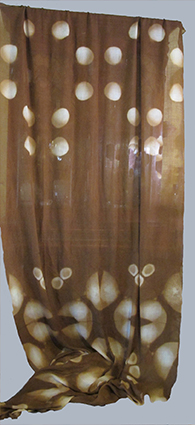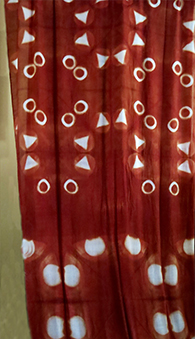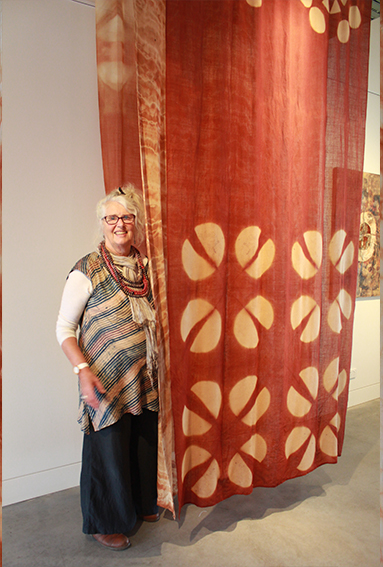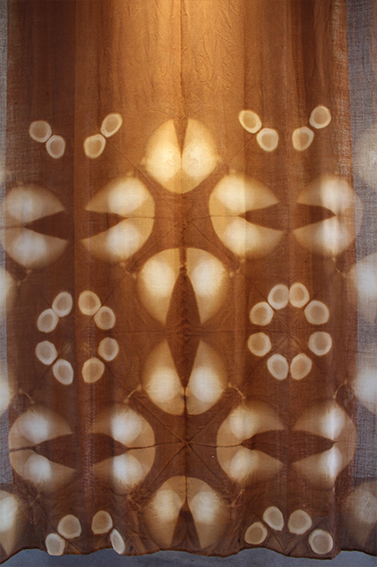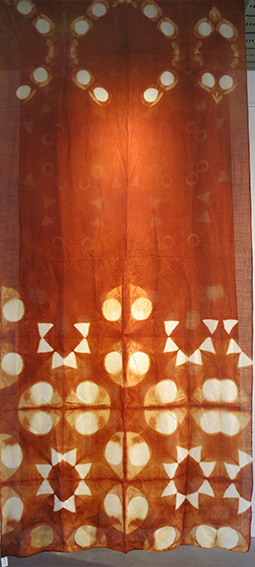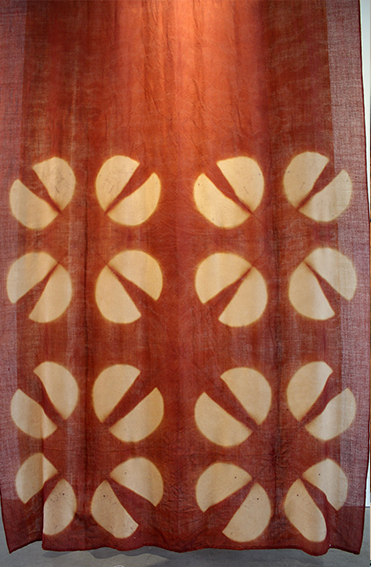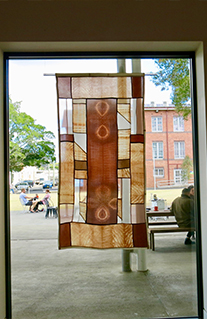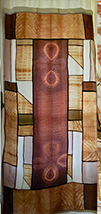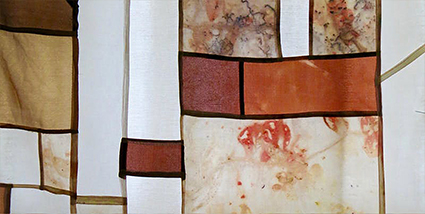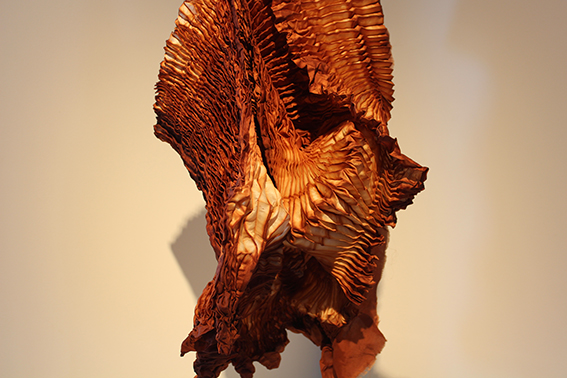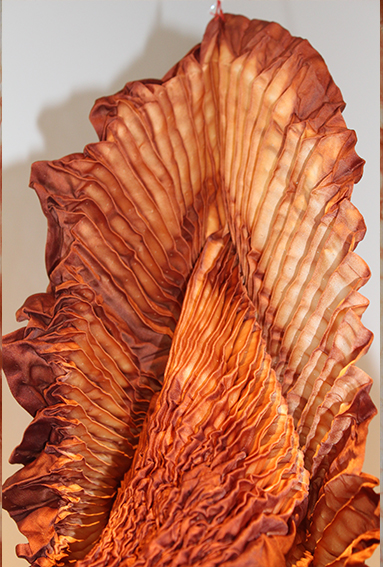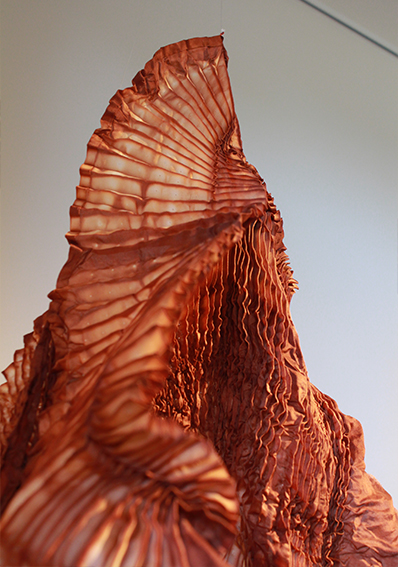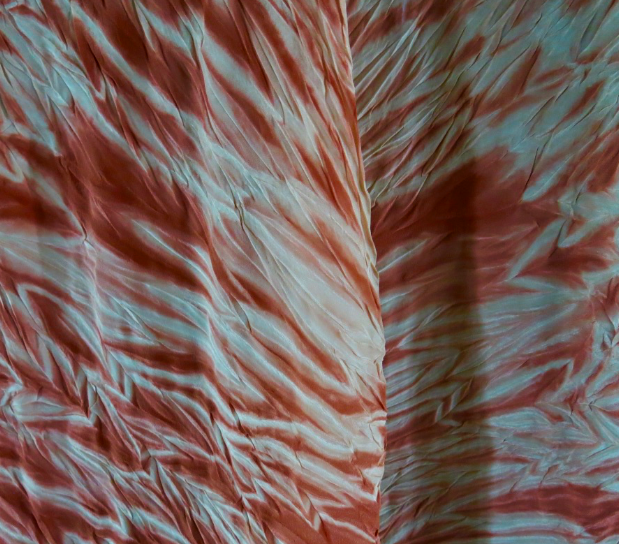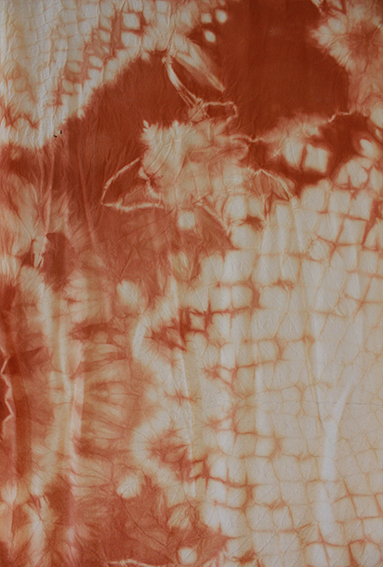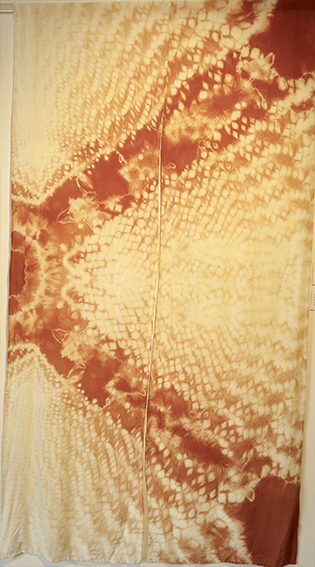August September 2018
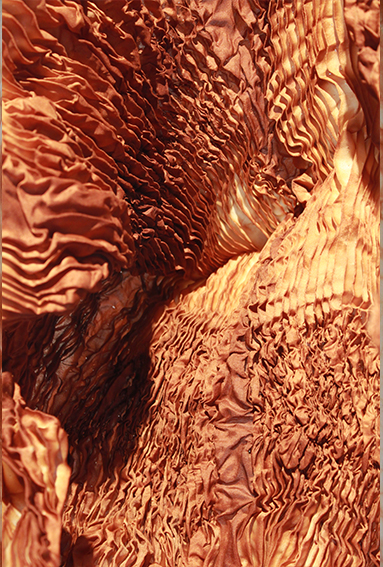
‘Gondwana Colour : Eucalyptus Colour’, invites an alternative awareness of the beauty of natural dyes.
“Today, globally there is a resurgence of interest in dyes from nature. As a textile artist specialize in natural dyes, my role is quite important… see myself as a heritage keeper, a keeper of dye knowledge handed down through generations ”…”My work contributes to critical debate in a contemporary context. “
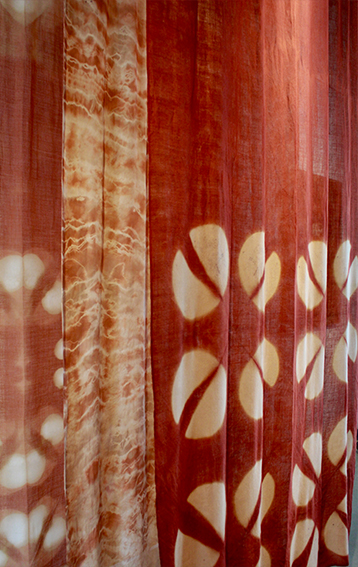
Installation of seven large shibori wool and silk artcloths of wool and silk, demonstrating colour from seven specific eucalypts.
This exhibition is the consolidation of extensive research I have undertaken into eucalyptus. Eucalyptus colour for protein fibres (wool and silk) does not have historical parallels anywhere in the world. While indigenous weavers and twiners, particularly in northern Australia, have used eucalyptus to colour cellulose fibres (baskets and the like) the use of eucalyptus as a protein colourant, does not have a heritage in this country. My exhibition demonstrates the glorious possibilities of eucalyptus leaves to provide colour, with wool and silk art cloths of 3m.”
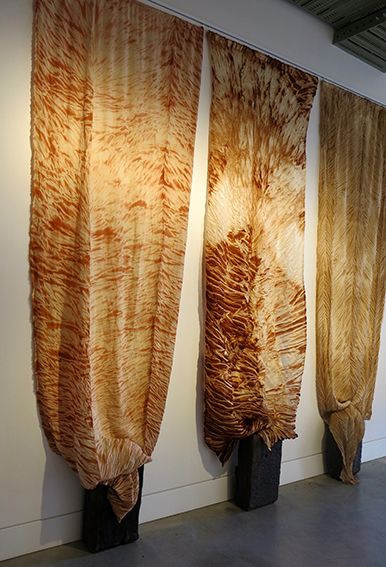
Geomorphology
silk arashi shibori
E crenulata, Ecinerea, E cingnata redgum blocks
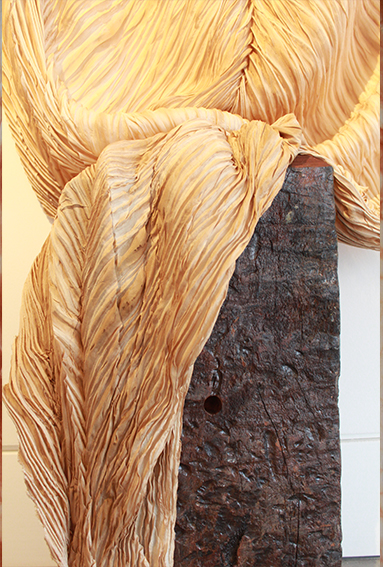
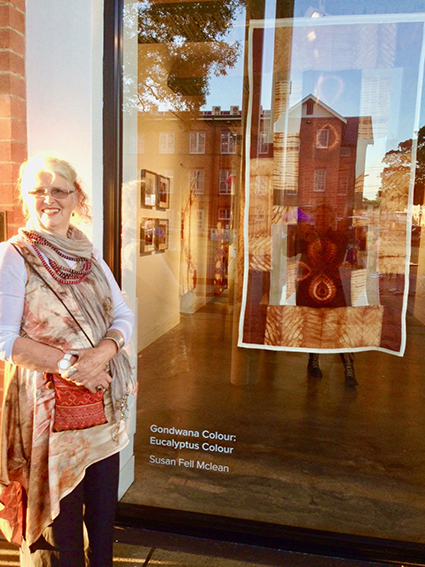
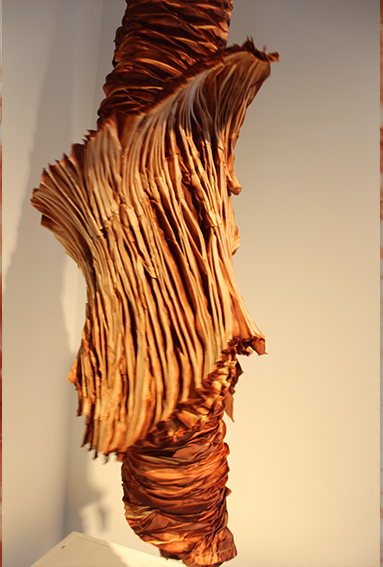
The Softer Shell
Arashi shibori
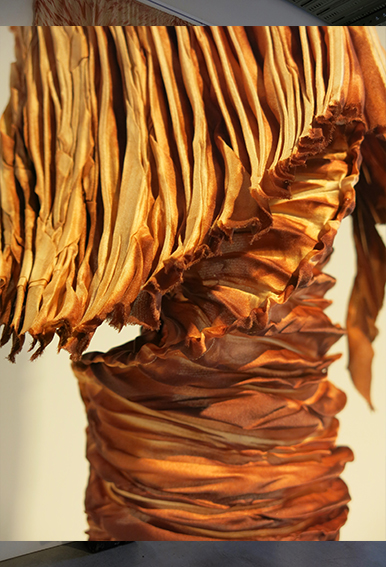
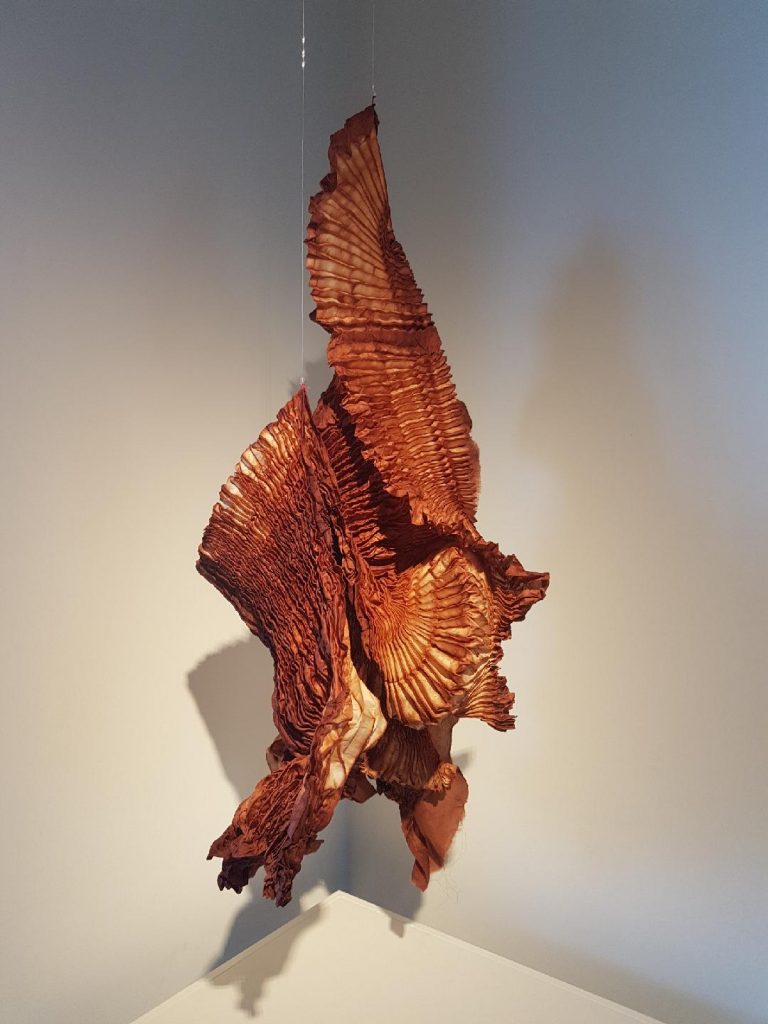
Mokume shibori, silk organza
3.5m with over 2000 stitches dyed in the leaves of E.cinerea
This sculpture references the French postmodernist philosopher Gilles Deleuze
Frictionless Ripples
Silk crepe de chine dyed with the leaves of E.crenulata. This is a very rare and endangered species of eucalyptus, with around 70 trees growing in the wild in only two valleys in Victoria Australia – Acheron Valley and Yerring Valley. Limited farm propagation has enabled me to explore the delicate pink extracted from the leaves of E.crenula.
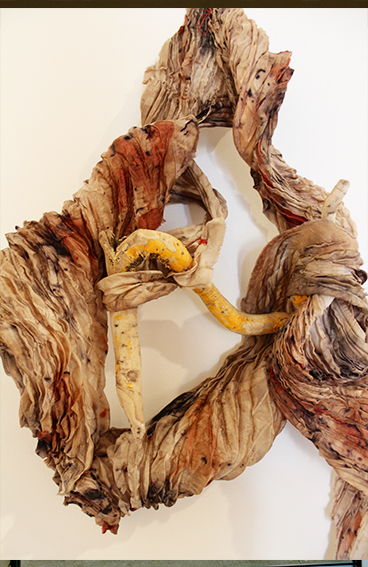
Epiphytic Adaptations
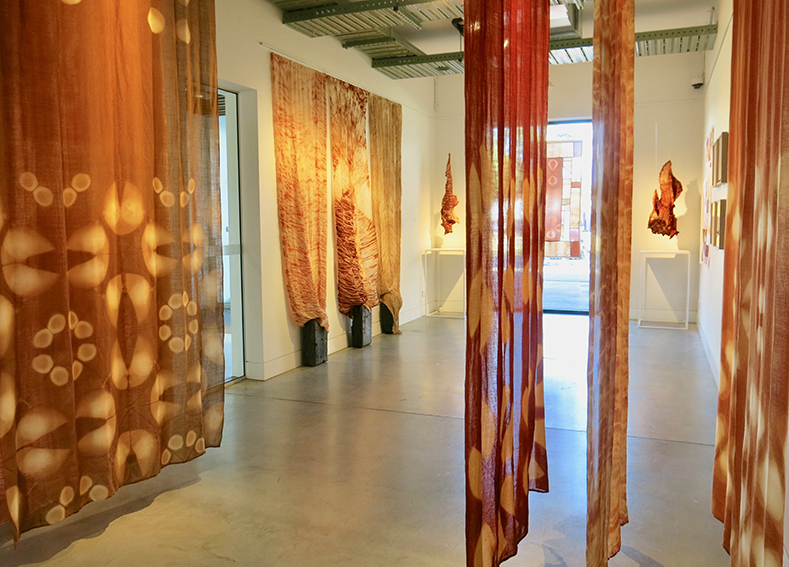
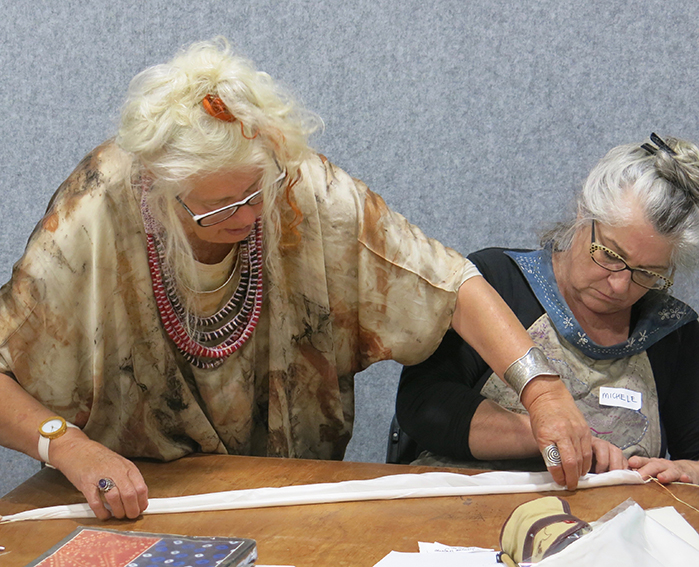
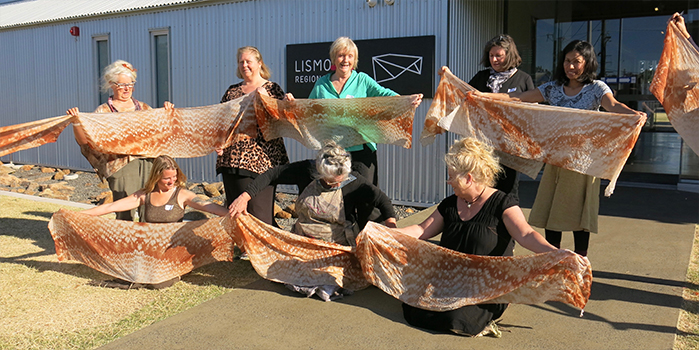
“I have attended many conferences in different countries, (often as a VIP invitee). The most recent being in 2017 – The UNESCO International Festival of Plants Ecology and Colour – Antananarivo Madagascar.
A dynamic global renaissance sees plant dye ‘know how’ once again being shown respect. Natural Dyes generate both monetary and non monetary value and bear the seeds of a sustainable future. With increasing emphasis on the interconnectedness of the environment to social, cultural and economic dimensions of sustainable development, it is possible to envisage natural dyes as a central pillar for sustainable development. This is especially important in countries with large textile industries and depleted cultural heritage.”
